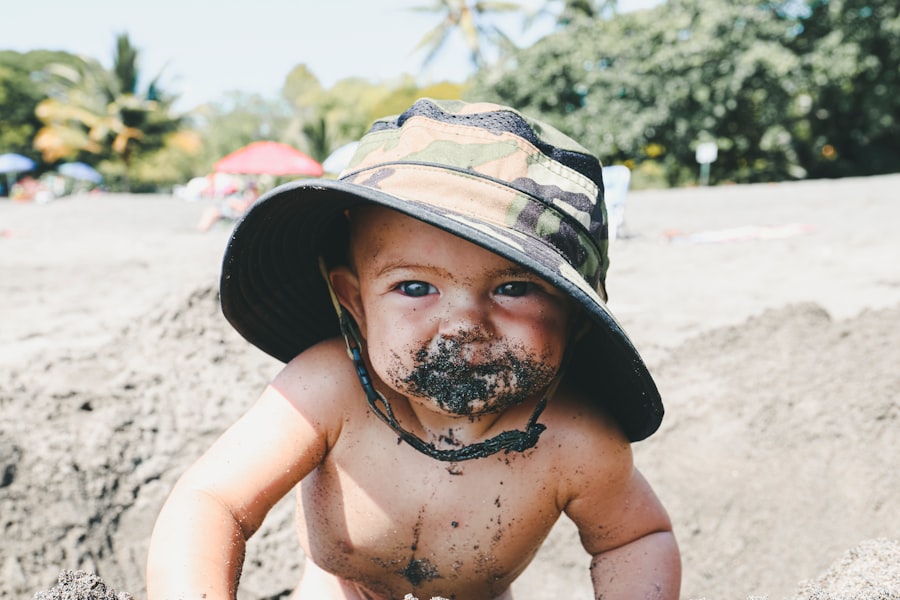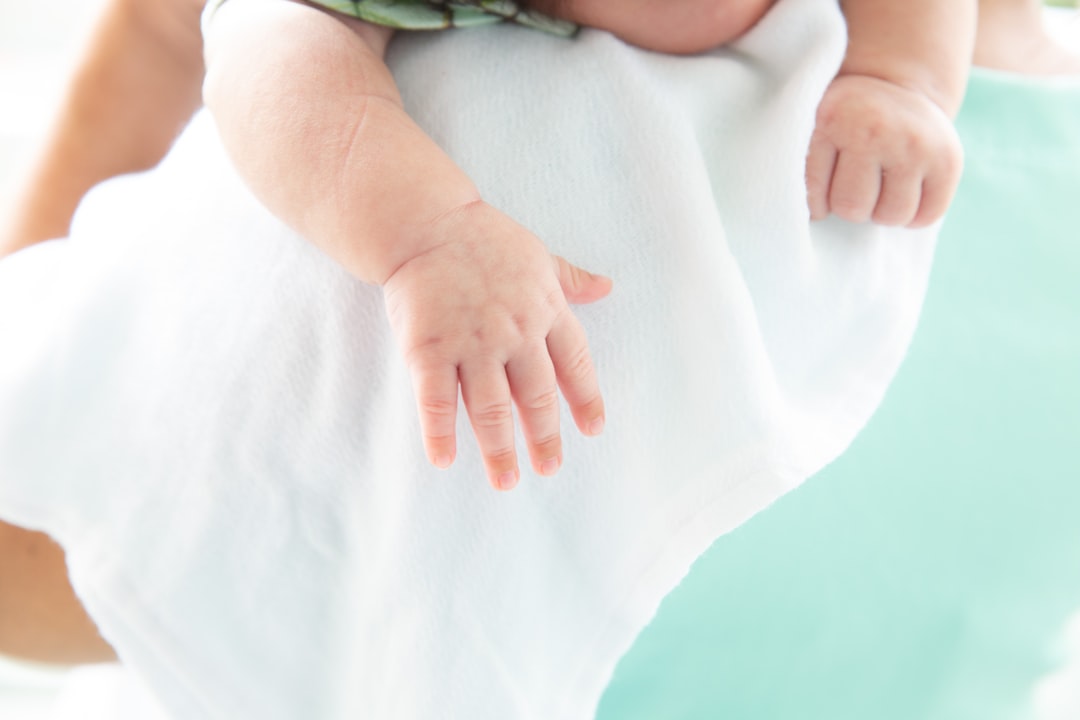Baby powder is a finely milled powder that has been a staple in many households, particularly those with infants. Traditionally, it has been used to absorb moisture and reduce friction on a baby’s delicate skin, especially in areas prone to rashes and irritation. The most common ingredient in baby powder is talc, a mineral that is known for its moisture-absorbing properties.
However, in recent years, cornstarch has emerged as a popular alternative, appealing to parents who are concerned about the potential risks associated with talc. The use of baby powder extends beyond just infants; many adults also use it for various purposes, including personal hygiene and as a dry shampoo. Its versatility makes it a common household item, but understanding its composition and potential effects is crucial for safe usage.
As you navigate the world of baby care products, being informed about what baby powder is and how it works can help you make better choices for your family.
Key Takeaways
- Baby powder is a product used to prevent diaper rash and keep skin dry.
- Talc-based baby powder has been linked to potential health risks, including ovarian cancer and respiratory issues.
- The controversy surrounding talc-based baby powder has led to lawsuits and concerns about its safety.
- Cornstarch-based baby powder is considered a safer alternative to talc-based powder.
- Alternative options to baby powder include diaper creams, petroleum jelly, and natural remedies like coconut oil.
The potential risks of using baby powder
While baby powder can be beneficial for keeping skin dry and preventing rashes, there are potential risks associated with its use that you should be aware of. One of the primary concerns is the risk of respiratory issues, particularly when the powder is inhaled. This is especially true for infants, whose lungs are still developing and are more susceptible to irritants.
When applying baby powder, it’s essential to avoid creating clouds of dust that can be inhaled, as this can lead to coughing or other respiratory problems. Another risk involves the ingredients used in baby powders. Talc-based powders have been scrutinized for their potential link to certain health issues, including ovarian cancer when used in the genital area.
Although the scientific community continues to debate these claims, it’s important to consider the potential implications of using talc-based products. As a parent or caregiver, being informed about these risks can help you make safer choices for your child’s health.
The controversy surrounding talc-based baby powder

The controversy surrounding talc-based baby powder has gained significant media attention over the years. Many lawsuits have been filed against companies that produce talc-based products, with plaintiffs claiming that long-term use led to serious health issues, including cancer. These allegations have prompted extensive research into the safety of talc, leading to mixed findings.
While some studies suggest a possible link between talc and cancer, others have found no conclusive evidence to support these claims. As you consider whether to use talc-based baby powder, it’s essential to stay informed about ongoing research and legal developments.
This shift reflects a growing awareness of consumer concerns and the importance of prioritizing safety in baby care products. Understanding the nuances of this controversy can help you make informed decisions about what products to use on your child.
The safety of using cornstarch-based baby powder
| Study | Findings |
|---|---|
| Journal of the American Academy of Dermatology | No evidence of increased cancer risk |
| American Journal of Obstetrics and Gynecology | No significant association with ovarian cancer |
| International Journal of Cancer | No overall increased risk of ovarian cancer |
| American Journal of Epidemiology | No clear association with ovarian cancer |
Cornstarch-based baby powder has emerged as a popular alternative to talc, often marketed as a safer option for parents concerned about the potential risks associated with talc.
Many parents find that cornstarch effectively keeps their baby’s skin dry and helps prevent diaper rash without the associated health concerns.
However, while cornstarch may be considered safer than talc, it’s not entirely without risks. For instance, if cornstarch is inhaled, it can still pose respiratory risks, particularly for infants. Therefore, when using cornstarch-based powders, it’s crucial to apply them carefully and avoid creating dust clouds.
By understanding both the benefits and limitations of cornstarch-based powders, you can make an informed choice that aligns with your family’s needs.
Alternative options to baby powder
If you’re looking for alternatives to traditional baby powder, there are several options available that can help keep your baby’s skin dry without the potential risks associated with talc or even cornstarch. One popular alternative is using natural oils or creams designed specifically for diaper rash prevention. These products often contain soothing ingredients like aloe vera or coconut oil that can provide moisture while protecting the skin from irritation.
Another option is using baking soda as a natural absorbent. Baking soda can help neutralize odors and absorb moisture without the risks associated with powders. You might also consider using cloth diapers with breathable materials that reduce moisture buildup and irritation.
By exploring these alternatives, you can find solutions that work best for your baby’s skin while minimizing any potential health concerns.
How to use baby powder safely

If you decide to use baby powder, whether talc or cornstarch-based, it’s essential to apply it safely to minimize any risks associated with inhalation or skin irritation. Start by shaking a small amount of powder into your hand rather than directly onto your baby’s skin. This method helps control the amount of powder used and reduces the likelihood of creating a dust cloud that could be inhaled.
When applying baby powder, focus on areas prone to moisture buildup, such as the diaper area or folds in the skin. Be sure to keep the container away from your baby’s face during application to prevent accidental inhalation. Additionally, always ensure that your baby’s skin is clean and dry before applying any powder to maximize its effectiveness and minimize irritation.
Tips for choosing a safe baby powder
When selecting a baby powder for your little one, there are several factors to consider to ensure you’re making a safe choice. First and foremost, check the ingredient list carefully. If you prefer to avoid talc due to its controversial nature, look for products that explicitly state they are cornstarch-based or made from natural ingredients.
Additionally, consider opting for products that are hypoallergenic and free from artificial fragrances or dyes. These additives can sometimes irritate sensitive skin or cause allergic reactions. Reading reviews and seeking recommendations from other parents can also provide valuable insights into which products are well-tolerated by babies’ delicate skin.
The potential health concerns associated with inhaling baby powder
Inhaling baby powder can pose significant health concerns, particularly for infants and young children whose respiratory systems are still developing. When fine particles enter the lungs, they can cause irritation and inflammation, leading to coughing or difficulty breathing. In some cases, repeated exposure may contribute to chronic respiratory issues over time.
It’s essential to be mindful of how you apply baby powder to minimize these risks. Avoid shaking the container vigorously or applying it directly onto your baby’s skin from a distance. Instead, use a gentle touch and apply it in a controlled manner to reduce the likelihood of creating airborne particles that could be inhaled.
The connection between baby powder and respiratory issues
Research has indicated a potential connection between baby powder use and respiratory issues in both infants and adults. Studies have shown that inhaling talc particles can lead to lung inflammation and other respiratory complications over time. For infants who may be more vulnerable due to their developing lungs, this risk is particularly concerning.
As you consider using baby powder, it’s crucial to weigh these potential risks against its benefits. If you notice any signs of respiratory distress in your child after using baby powder—such as coughing or wheezing—it may be wise to discontinue use and consult with a healthcare professional for guidance on alternative options.
The importance of consulting with a pediatrician before using baby powder
Before introducing any new product into your baby’s routine, including baby powder, it’s always best practice to consult with your pediatrician. They can provide personalized advice based on your child’s specific needs and any existing health concerns. Your pediatrician may recommend alternatives or suggest specific brands known for their safety and efficacy.
Additionally, discussing your concerns about talc versus cornstarch with your pediatrician can help clarify any misconceptions you may have about these ingredients. They can guide you through the latest research findings and help you make informed decisions regarding your child’s skincare routine.
The ongoing research and developments in baby powder safety
The landscape surrounding baby powder safety continues to evolve as new research emerges and consumer awareness grows. Ongoing studies aim to better understand the long-term effects of both talc and cornstarch-based powders on health outcomes in children and adults alike. As more data becomes available, manufacturers may adjust their formulations or labeling practices in response to consumer demand for safer products.
Staying informed about these developments is crucial as a parent or caregiver. By keeping up with the latest research findings and recommendations from health organizations, you can make educated choices about which products are best suited for your family’s needs while prioritizing safety above all else.
If you’re concerned about the safety of baby powder, you might find it helpful to read a related article that discusses the potential risks and alternatives. For more information, check out this insightful piece on the topic: Is My Baby Powder Safe?. This article provides a comprehensive overview of the ingredients commonly found in baby powders and offers guidance on safer options for your little one.
WATCH THIS! The $14 Billion Lie Hiding in America’s Drugstore
FAQs
What is baby powder?
Baby powder is a product used to absorb moisture and reduce friction on the skin. It is commonly made from talc or cornstarch.
Is baby powder safe for my baby?
There has been some concern about the safety of using talc-based baby powder, as it may be linked to respiratory issues and ovarian cancer in women. However, cornstarch-based baby powder is generally considered safe for use on babies.
What are the potential risks of using talc-based baby powder?
Talc-based baby powder has been associated with respiratory problems when inhaled, and there is some evidence to suggest a possible link to ovarian cancer when used in the genital area.
How can I ensure the safety of the baby powder I use?
To ensure the safety of the baby powder you use, opt for a cornstarch-based formula rather than a talc-based one. Additionally, always apply baby powder away from the baby’s face to minimize inhalation.
Are there any alternatives to baby powder?
There are alternative products such as baby creams, lotions, and ointments that can be used to protect the baby’s skin from moisture and friction. It’s best to consult with a pediatrician for recommendations on safe and effective alternatives.
